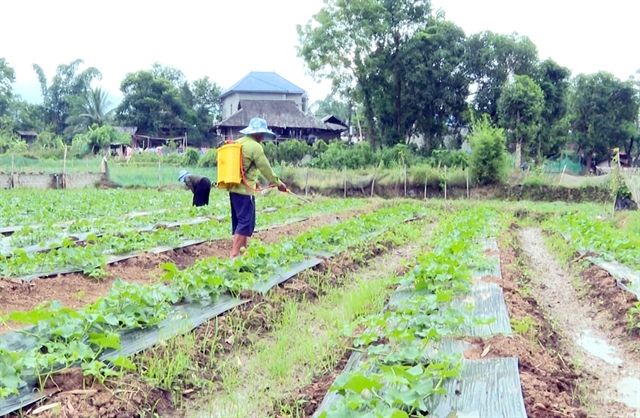UF Rental Market Study: Low-income renters struggle to afford housing amid soaring costs – Florida Politics

Report on Florida’s Rental Housing Affordability Crisis and its Implications for Sustainable Development Goals
Introduction: The Widening Affordability Gap
A 2025 Statewide Rental Market Study by the University of Florida’s Shimberg Center for Housing Studies reveals a severe and growing housing affordability crisis for low-income renters in Florida. The findings indicate a significant challenge to achieving several key United Nations Sustainable Development Goals (SDGs), particularly those related to poverty, inequality, and sustainable communities. The report, conducted for the Florida Housing Finance Corp., serves as a critical tool for directing state resources to address these mounting pressures.
Key Findings of the 2025 Statewide Rental Market Study
- Widespread Cost Burden: Approximately 904,635 renter households, earning 60% or less of their area’s median income, are severely cost-burdened, with many spending over 40% of their income on housing. This directly undermines progress toward SDG 1 (No Poverty) by limiting disposable income for other essential needs.
- Escalating Rental Costs: Between 2019 and 2023, the median rent in Florida increased by nearly $500, from $1,238 to $1,719 per month.
- Population Growth vs. Housing Supply: The state added over one million new households during the same period, far outpacing the construction of approximately 240,000 new multi-family units. This imbalance is a primary driver of the affordability crisis.
- Risk to Assisted Housing: Over 33,000 publicly assisted rental units are at risk of losing their affordability protections by 2034, threatening to displace vulnerable populations and further strain community resources.
Direct Impacts on Sustainable Development Goals (SDGs)
The housing crisis in Florida presents a direct impediment to the achievement of the 2030 Agenda for Sustainable Development. The primary goals affected include:
- SDG 11: Sustainable Cities and Communities
- The core finding of the report—the lack of affordable housing—is a direct contradiction to Target 11.1, which aims to ensure access for all to adequate, safe, and affordable housing.
- The potential loss of 33,000 assisted units represents a significant setback for this goal, highlighting the urgent need for preservation policies.
- SDG 10: Reduced Inequalities
- The study explicitly shows that the crisis disproportionately affects low-income households, thereby exacerbating economic inequality within the state.
- The fact that older adults (55+) constitute 39% of cost-burdened households underscores the vulnerability of specific demographic groups.
- SDG 1: No Poverty
- When housing consumes more than 40% of income, households are forced into financial precarity, making it difficult to escape the cycle of poverty. Affordable housing is a cornerstone of poverty reduction strategies.
- SDG 8: Decent Work and Economic Growth
- An unaffordable housing market prevents the workforce, including essential service providers, from living in the communities they serve. This instability can hinder sustainable local economic growth.
Policy Implications and Strategic Response
The study’s data is integral to guiding the funding decisions of the Florida Housing Finance Corporation’s programs, such as the State Apartment Incentive Loan (SAIL). Anne Ray, Manager of the Florida Housing Data Clearinghouse, emphasized the report’s role in targeting resources to communities with the most acute needs. Addressing this crisis requires a dual approach:
- Preservation: Implementing policies to renew assistance for the 33,000 at-risk units is critical to maintaining the existing stock of affordable housing, a key tenet of SDG 11.
- Expansion: Increasing the supply of affordable housing through state and federal programs is essential to keep pace with population growth and close the affordability gap.
Failure to address these challenges will not only deepen the housing crisis but also significantly obstruct Florida’s progress toward creating inclusive, resilient, and sustainable communities for all its residents.
SDGs Addressed in the Article
SDG 1: No Poverty
- The article directly addresses the financial struggles of “low-income renters” in Florida. The inability to afford basic necessities like housing is a key dimension of poverty. The text highlights that a significant number of households are “struggling to meet housing costs,” which can perpetuate or deepen poverty.
SDG 10: Reduced Inequalities
- The analysis focuses on the “growing affordability gap,” which is a manifestation of economic inequality. It specifies that “904,635 renter households earn 60% less than the median income in their areas,” pointing to a disparity between income levels and the cost of living. The article also singles out vulnerable groups, such as people “55 years old and older” and “people with special needs,” who are disproportionately affected by the housing crisis, which relates to reducing inequalities based on age and disability.
SDG 11: Sustainable Cities and Communities
- This is the most central SDG in the article. The entire piece revolves around the lack of affordable and adequate housing. Phrases like “limited housing supply,” “pushing rents beyond what many families can afford,” and the need for “stable, affordable homes” directly connect to the goal of making cities and human settlements inclusive, safe, resilient, and sustainable.
Identified SDG Targets
Target 11.1: Ensure access for all to adequate, safe and affordable housing and basic services.
- The article is a direct examination of this target’s failure in Florida. It states that many renters are “paying more than 40% of their income on rent,” which is a standard measure for unaffordable housing. The study’s purpose is to guide funding for housing programs like SAIL, which are designed to create affordable housing, further aligning with this target. The potential loss of “33,000 publicly assisted rental units” also directly threatens the availability of affordable housing.
Target 1.4: By 2030, ensure that all men and women, in particular the poor and the vulnerable, have equal rights to economic resources, as well as access to basic services…
- The article’s focus on “low-income renters” struggling to afford housing connects directly to this target’s emphasis on access to basic services for the poor and vulnerable. Housing is a fundamental basic service, and the “affordability gap” described is a barrier to accessing it.
Target 10.2: By 2030, empower and promote the social, economic and political inclusion of all, irrespective of age… or economic or other status.
- The article provides data on specific groups being excluded from the affordable housing market. It identifies “low-income” households, seniors (“People 55 years old and older make up about 39% of burdened households”), and “people with special needs” as groups requiring targeted assistance, which aligns with the goal of promoting inclusion for all, regardless of economic status or age.
Mentioned or Implied Indicators
Indicator 11.1.1: Proportion of urban population living in slums, informal settlements or inadequate housing.
- The article provides a direct proxy for this indicator by quantifying the housing cost burden. It states that many low-income households are “paying more than 40% of their income on rent.” This percentage is a key measure used to identify households living in unaffordable, and therefore inadequate, housing conditions. The article also quantifies the number of households affected: “About 904,635 renter households earn 60% less than the median income in their areas,” which leads to this cost burden.
Implied Indicator for Target 10.2: Proportion of population living below 50 per cent of median income, by age group.
- While not using the exact UN wording, the article provides data directly related to this concept. It identifies “904,635 renter households earn 60% less than the median income in their areas.” It also specifies an age-related dimension, noting that “People 55 years old and older make up about 39% of burdened households,” allowing for a measurement of economic vulnerability by age.
Implied Indicator for Target 11.1: Availability and affordability of housing.
- The article provides several data points that can be used to measure this.
- Price Increase: “median rental prices skyrocketed about $500 per month going from $1,238 to $1,719” between 2019 and 2023.
- Supply vs. Population Growth: “more than 1 million households added to the state” versus the addition of only “approximately 240,000 multi-family units” in the same period.
- At-Risk Affordable Stock: “more than 33,000 publicly assisted rental units could lose affordability protections by 2034.”
Summary Table of SDGs, Targets, and Indicators
| SDGs | Targets | Indicators |
|---|---|---|
| SDG 11: Sustainable Cities and Communities | Target 11.1: Ensure access for all to adequate, safe and affordable housing and basic services. |
|
| SDG 1: No Poverty | Target 1.4: Ensure that all men and women, in particular the poor and the vulnerable, have access to basic services. |
|
| SDG 10: Reduced Inequalities | Target 10.2: Empower and promote the social, economic and political inclusion of all, irrespective of age… or economic or other status. |
|
Source: floridapolitics.com

What is Your Reaction?
 Like
0
Like
0
 Dislike
0
Dislike
0
 Love
0
Love
0
 Funny
0
Funny
0
 Angry
0
Angry
0
 Sad
0
Sad
0
 Wow
0
Wow
0


-1920w.png?#)




































































